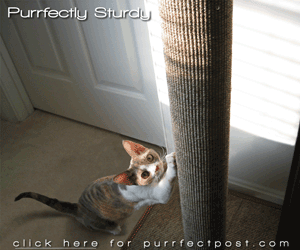New York Becomes First U.S. State to Ban Declaw Surgeries

On July 22, 2019, New York became the first state to ban declawing in cats. Mayor Cuomo signed a bill that was passed by the state legislature in the spring.
Why Ban Declaw Surgeries?
Declawing is amputation of a cat's toes up to the first joint. It's not like a human trimming their nails. The procedure is excruciating for the cat, both when they are healing from the initial surgery and possibly later in life as chronic changes can occur in the bones of the feet.
Cats are digitigrade animals. That means they walk on their toes, unlike plantigrade humans, who walk on the bottoms of their feet. That means that, when a declaw is performed, the cat wakes up and must walk directly on 10 amputation sites (18 if all four paws are declawed at once).
Declaw surgeries carry a high rate of potential complications, including:
- Opening of the incision sites
- Infection
- Regrowth of claws due to improper technique
- Arthritis
- Change in gait
- Difference in personality
- Litter box issues such as inappropriate urination
Because most declaws are done to protect furniture rather than for any benefit to the cat while simultaneously causing pain and potentially decreasing quality of life for the kitty, the surgery is considered inhumane by many.
Scratching Is Normal and Healthy for Cats
Cats scratch things for a few reasons:
- To exercise and stretch their toes, feet, legs, neck, and back
- To shed outer, dull layers of their claws
- To mark territory with visible scratches and scents from glands in their paws
- To relieve stress
Cats need to scratch for good mental and physical health.
How to Control Scratching
Many people feel that their household items will suffer if they have a non-declawed cat. But there are ways to ensure your cat can indulge in scratching that is healthy for them without doing damage to your furniture, carpet, or humans in the home. Here are some of those ways:
- Use Soft Paws. They are vinyl caps that can slide over your cat's claws. You use included non-toxic adhesive to keep them on, and they allow your cat to extend and retract the claws and engage in scratching without the damage.
- Get quality scratching posts. If a cat has excellent alternatives, they will usually leave your furniture alone. The posts must be sturdy, tall, and covered in a satisfying scratching material like heavy corrugated cardboard or sisal fabric. Sisal rope and carpet catch cats' claws and pull on their toes.
Other Declaw Bans
There are many countries around the world and some US and Canadian cities that ban declaw procedures. If you'd like to get involved in supporting declaw bans elsewhere, check out The Paw Project and let them know you want to help.
You May Also Like These Articles:
Declawing Cats: Just Don't Do It
Declawing Cats: Banning Declaw Surgeries
What Is the Best Cat Scratching Post for Your Cat?
Benefits of a Good Cat Scratching Post
Notice: Ask-a-Vet is an affiliated service for those who wish to speak with a veterinary professional about their pet's specific condition. Initially, a bot will ask questions to determine the general nature of your concern. Then, you will be transferred to a human. There is a charge for the service if you choose to connect to a veterinarian. Ask-a-Vet is not manned by the staff or owners of CatHealth.com, and the advice given should not delay or replace a visit to your veterinarian.






